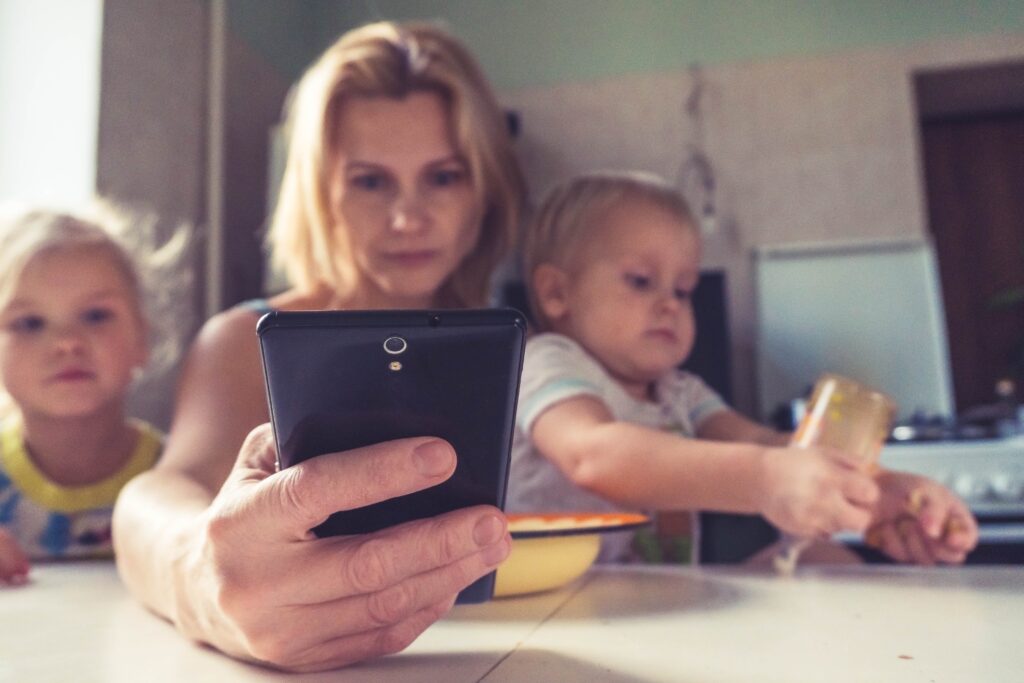Here’s what you should know about sharenting and why it’s in your child’s interest to avoid doing it.
Sharenting: Parenting in the 21st century is deeply intertwined with technology. Whether it’s keeping children entertained with iPads during flights or using apps to monitor their development and activities, the role of technology has redefined the essence of parenthood.
The advent of social media has introduced a new aspect, where the average child’s digital presence often commences with parents sharing ultrasound photos and engaging in “sharenting” to involve friends and family in their joyous moments.
However, some parents, particularly those who embraced social media early on, may fall into the habit of excessively sharing about their children, leading to a phenomenon known as ‘oversharenting.’ Like all aspects of social media, this practice carries various risks, underscoring the importance of parents learning how to share about their kids safely.
What is sharenting?
Sharenting is the trend where parents share pictures of their children online, typically on platforms like Instagram and Facebook, capturing everyday moments such as first steps, zoo visits, school performances, and holidays. While the intention is often to share the joys of parenting with friends and family, the act of posting photos online raises certain issues.
Despite the potential positives of sharenting, like building online communities for parents and providing support for first-time parents feeling uncertain, it comes with drawbacks. For instance, parents living far from relatives and friends can use online sharing to involve these significant individuals in their children’s lives. However, the practice becomes problematic when parents share images containing personal details or potentially embarrassing information as their children grow older – a phenomenon referred to as ‘oversharenting.’
With the increasing prevalence of social media platforms like Facebook and Instagram, sharenting has become normalized in society. Statistics reveal that over 75% of parents share images of their children on social media, and a significant portion (33%) do so without obtaining their children’s permission. This normalization highlights the need for awareness and responsible practices in the realm of online sharing about children.

What are the dangers of sharenting?
Despite the seemingly innocent nature of sharing images of children, parents should be mindful that posting photos online, whether with family, friends, acquaintances, or the public, can lead to various problems. There are crucial factors parents must consider before engaging in such practices, especially considering the potential dangers associated with sharenting, such as:
Potential embarrassment as the child grows: As children age, they may feel embarrassed or uncomfortable about personal details shared online without their consent, emphasizing the importance of considering the long-term impact of sharenting.
Permanence of digital content and the Internet: The permanence of digital content on the Internet poses a significant risk. Even if parents delete their posts, the information may linger online, creating a lasting digital footprint for the child involved in the shared images.
Sharenting dangers of child predators: Sharing photos can inadvertently expose children to child predators. The inability to verify the identity of social media connections, combined with details visible in images, can potentially aid predators in tracking children, posing a serious risk to their safety.
The pervasiveness of social media: The widespread use of social media increases the reach of shared images, making it challenging for parents to control how far and wide these pictures might circulate.
Identity theft from shared information: Sharenting habits, such as using real names and providing details in captions, expose children to potential identity theft. Cybercriminals can piece together information from various sources, leading to nefarious use of the child’s identity.
Losing control of images: Once shared online, parents lose control over what happens to their images. Privacy settings on social media platforms may offer some protection. Still, the risk remains that others can save, alter, or misuse images, given that most platforms own the content posted on their sites.
To mitigate these sharenting dangers, parents must exercise caution, consider the potential consequences, and prioritize their children’s privacy and safety over the desire to share moments online. Responsible online practices can help safeguard children from identity theft, potential embarrassment, and exposure to risks associated with oversharenting.

10 tips for safely sharing photos online
Given the outlined sharenting dangers, parents might question the safety of any online photo sharing involving their children. This decision is highly personal, and while some parents opt not to share any images, others may want to continue but take measures to enhance security and minimize the risks of oversharenting. Here are some considerations to keep in mind:
Turn off metadata and geotagging: Disabling metadata and geotagging functions can reduce others’ ability to track children through online photo sharing.
Check privacy settings: Ensure all posts are visible only to family and close friends, and restrict resharing permissions. Allowing strangers and acquaintances access to children’s photos can pose a sharenting danger.
Avoid identifiable information: Refrain from including details in photos or captions that could enable others to locate and track children. This includes names, birthdates, school names, regular hangout spots, or family homes.
Use pseudonyms or descriptive phrases: Opt for nicknames or descriptive phrases instead of revealing children’s full names when sharing online.
Discuss privacy with friends and family: Clearly communicate and set boundaries with friends and family regarding protecting children’s privacy when engaging with posts.
Avoid posting potentially embarrassing images: Steer clear of posting images that may become problematic for children as they grow older, such as bath time or funny outfit pictures.
Avoid showing the child’s face: To prevent oversharenting, some parents choose to cover their children’s faces before posting photos on social media. This can be done using built-in app features like stickers or editing tools to blur or block out facial features.
Use secure platforms: Consider using more secure platforms with features like end-to-end encryption. For instance, WhatsApp allows users to send photos that can only be opened once.
By being mindful of these measures, parents can balance sharing precious moments with loved ones and protecting their children from the risks of oversharenting.



